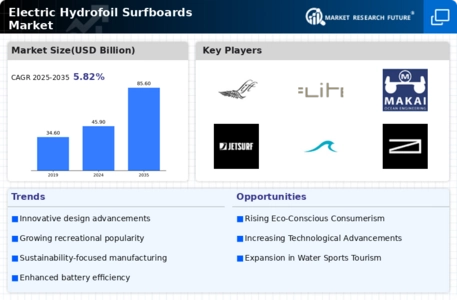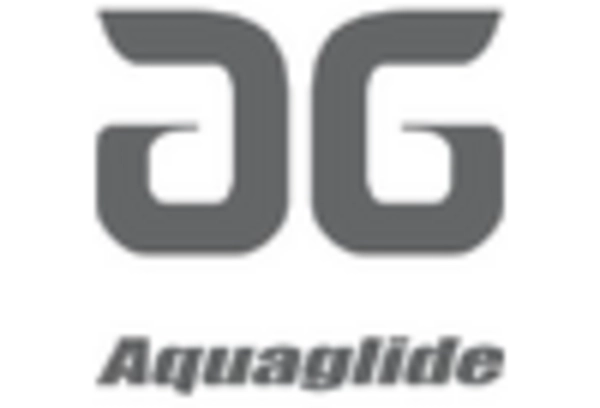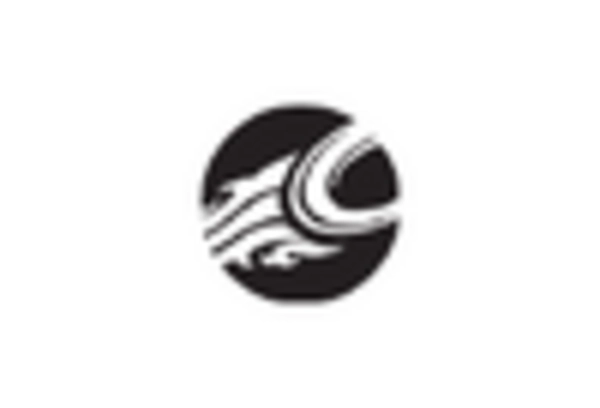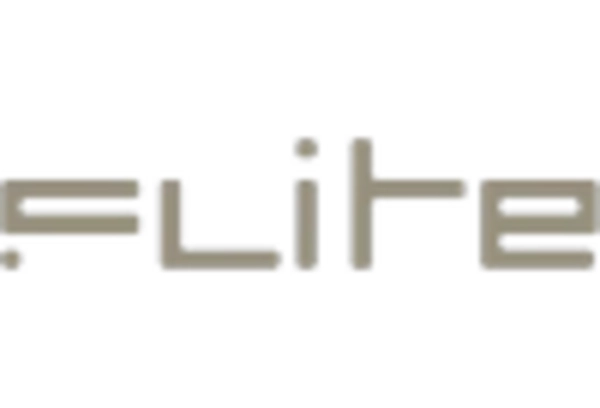Environmental Awareness
The Electric Hydrofoil Surfboards Market is witnessing a growing emphasis on environmental sustainability. As consumers become more conscious of their ecological footprint, the demand for eco-friendly water sports equipment is on the rise. Electric hydrofoil surfboards, which produce zero emissions during operation, align with this trend, appealing to environmentally aware consumers. The industry is responding by developing products that utilize sustainable materials and manufacturing processes. This shift not only caters to consumer preferences but also positions companies favorably in a market increasingly focused on sustainability. According to recent estimates, the market for electric hydrofoil surfboards could reach USD 500 million by 2027, largely driven by this heightened environmental awareness.
Technological Innovations
The Electric Hydrofoil Surfboards Market is experiencing a surge in technological innovations that enhance performance and user experience. Advancements in battery technology, such as lithium-ion batteries, have significantly improved the range and efficiency of electric hydrofoil surfboards. These innovations allow for longer ride times and faster speeds, appealing to both recreational and professional users. Additionally, the integration of smart technology, including GPS and mobile app connectivity, provides users with real-time data on speed, battery life, and location. This trend is likely to attract a broader audience, as consumers increasingly seek high-tech solutions in their water sports activities. The market is projected to grow at a compound annual growth rate of approximately 15% over the next five years, driven by these technological advancements.
Expansion of Rental Services
The Electric Hydrofoil Surfboards Market is experiencing a notable expansion in rental services, which is making these products more accessible to a wider audience. Many coastal regions and tourist destinations are beginning to offer electric hydrofoil surfboard rentals, allowing individuals to experience the sport without the commitment of purchasing equipment. This trend is particularly appealing to tourists and casual users who may be hesitant to invest in high-cost items. The rental market is projected to grow significantly, with estimates suggesting a 20% increase in rental services over the next few years. This expansion not only boosts the visibility of electric hydrofoil surfboards but also encourages potential buyers to try before they buy, ultimately driving sales in the industry.
Investment in Infrastructure
The Electric Hydrofoil Surfboards Market is likely to benefit from increased investment in infrastructure that supports water sports activities. As municipalities and private enterprises recognize the economic potential of water sports tourism, they are investing in facilities such as marinas, launch sites, and dedicated surfing zones. This development creates a more favorable environment for electric hydrofoil surfing, attracting both enthusiasts and newcomers to the sport. Enhanced infrastructure can lead to increased participation rates and, consequently, higher demand for electric hydrofoil surfboards. The market could see a growth rate of 12% as these investments materialize, fostering a more robust ecosystem for water sports and promoting the adoption of electric hydrofoil surfboards.
Rising Popularity of Water Sports
The Electric Hydrofoil Surfboards Market is benefiting from the increasing popularity of water sports among diverse demographics. As more individuals seek recreational activities that combine adventure and fitness, electric hydrofoil surfing has emerged as an attractive option. The unique experience of gliding above the water offers a thrilling alternative to traditional surfing and paddleboarding. This trend is particularly evident among younger consumers, who are drawn to innovative and exciting outdoor activities. The market is projected to expand as more water sports enthusiasts discover the advantages of electric hydrofoil surfboards, with participation rates in water sports expected to rise by 10% annually. This growing interest is likely to drive sales and foster a competitive market landscape.

















Leave a Comment